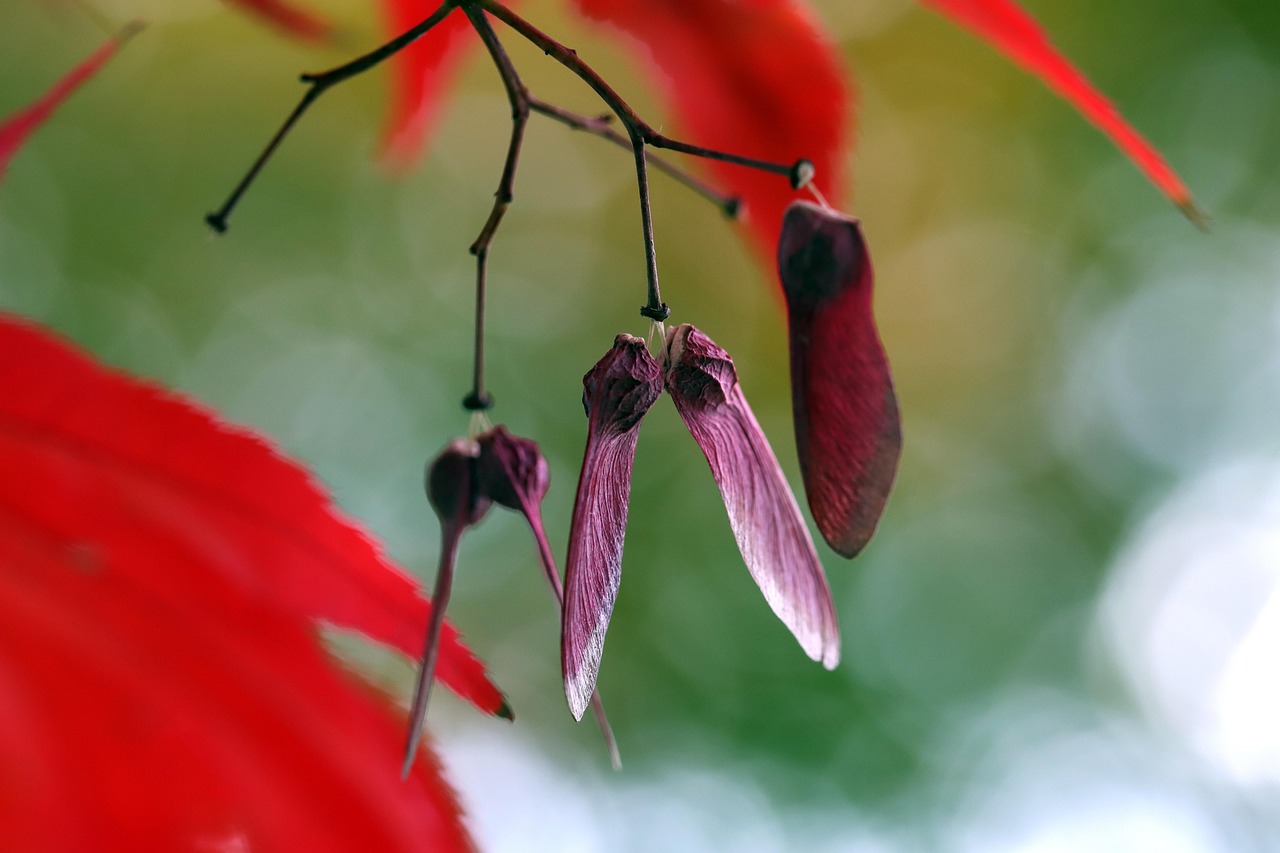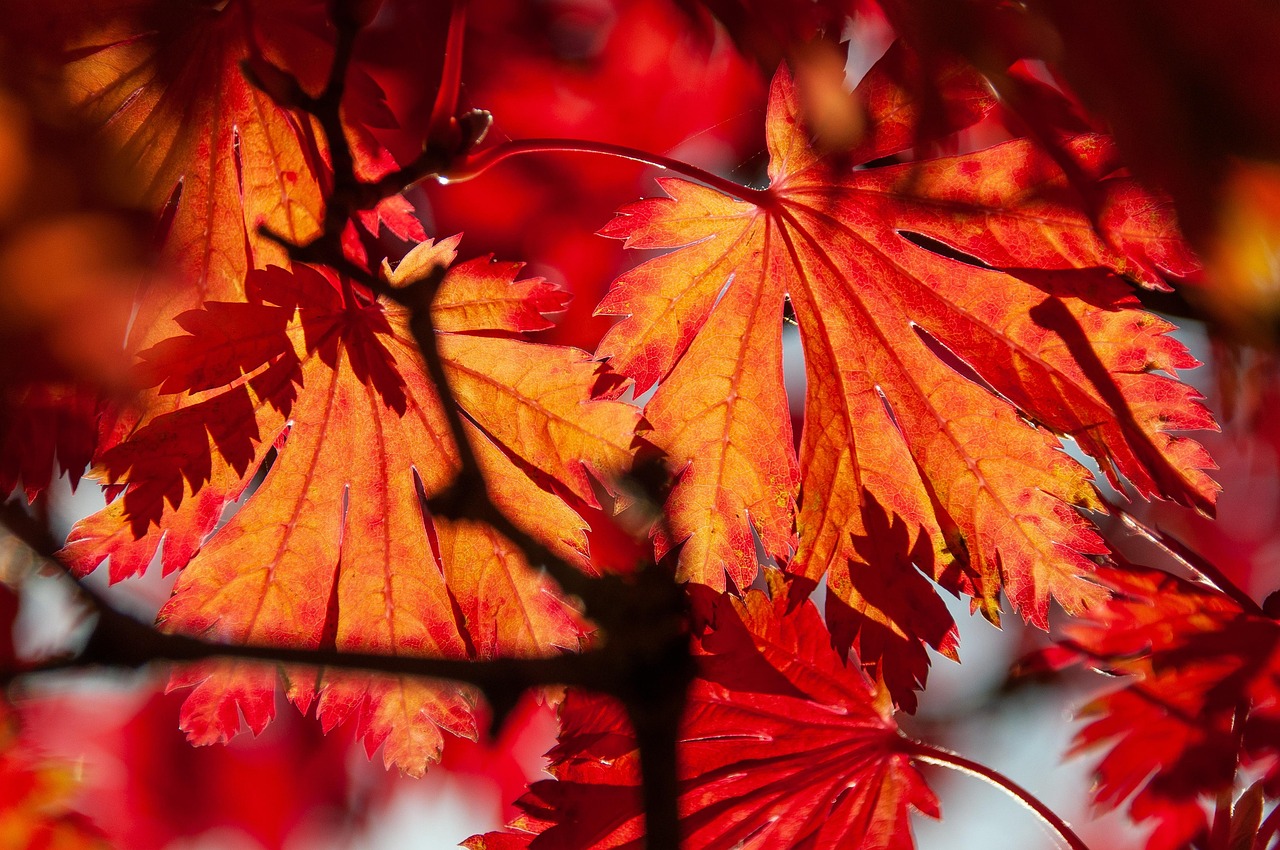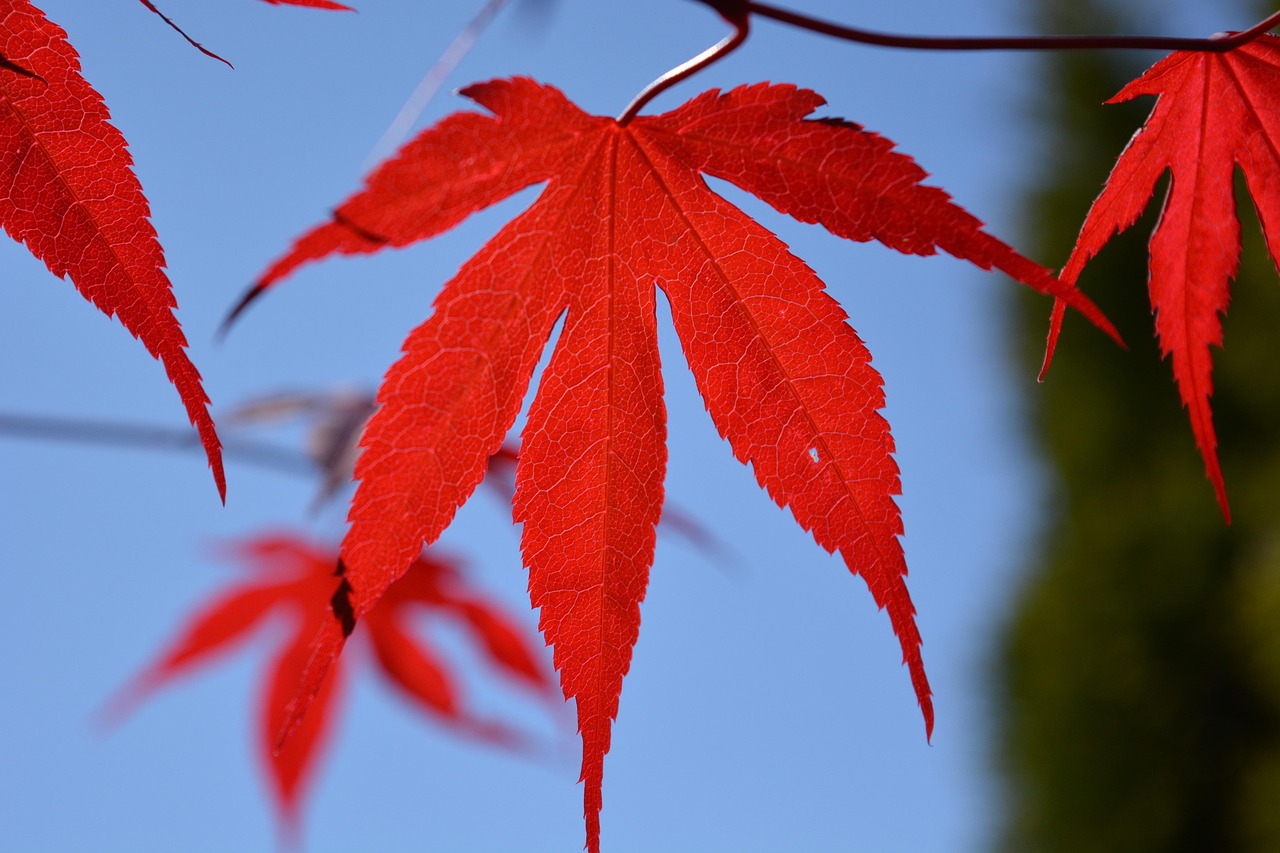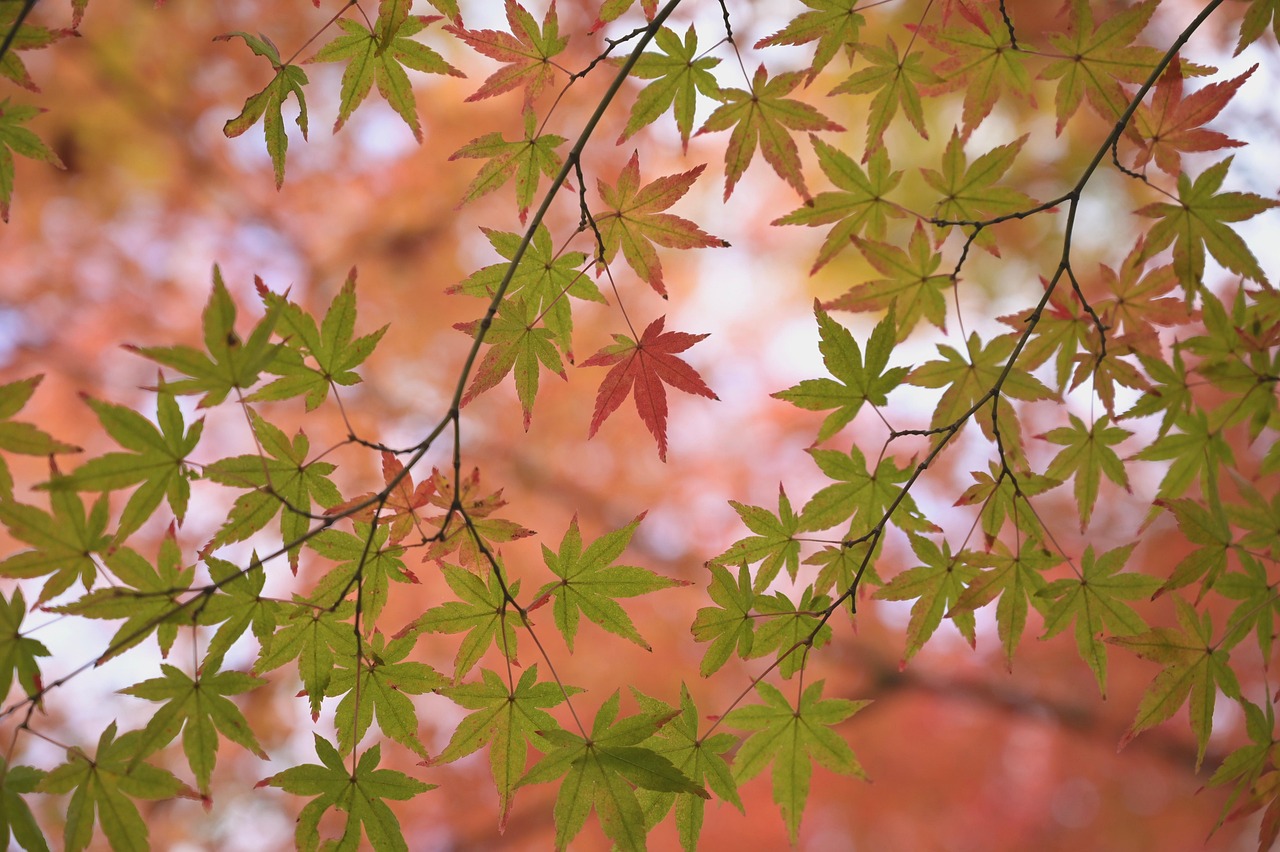Variegated maple trees are prized for their striking foliage and can grow at a moderate rate of about 1 to 2 feet per year. When planted as decorative borders, they typically reach a height of 15 to 25 feet, depending on the specific variety. Proper care, including adequate sunlight and well-drained soil, can enhance their growth.
The variegated maple tree typically exhibits a moderate growth rate, averaging about 12 to 24 inches per year. This makes it suitable for decorative borders, as it can establish itself relatively quickly while providing vibrant foliage.
The variegated maple tree, scientifically known as Acer platanoides ‘Drummondii’, is a popular choice for landscaping due to its striking leaves. The unique coloration of its leaves, which feature green and white margins, adds visual interest to gardens and borders. This deciduous tree not only serves as an aesthetic focal point but also complements various garden styles, from modern to traditional.

Understanding the growth rate of the variegated maple is essential for gardeners and landscapers. Its moderate growth allows for quick establishment in a landscape setting. This growth rate can vary based on several factors, including soil quality, climate conditions, and care practices. For those looking to plant these trees for decorative borders, knowing these factors can help in planning and maintenance.
Factors Influencing Growth Rate
Several environmental and care-related factors can influence the growth rate of the variegated maple tree. Here are some key considerations:
- Soil Quality: Variegated maples prefer well-drained, loamy soil rich in organic matter. Poor soil conditions can stunt growth.
- Watering: Consistent moisture is crucial, especially during dry spells. However, overwatering can lead to root rot.
- Sunlight: These trees thrive in full sun to partial shade. Insufficient light may inhibit growth and affect leaf coloration.
- Fertilization: Regular feeding with a balanced fertilizer can enhance growth. However, excessive fertilization can be counterproductive.
- Pest and Disease Management: Keeping the tree healthy through pest control measures will support optimal growth rates.
The importance of the right planting location cannot be overstated. Variegated maples can reach a height of 30 to 50 feet at maturity and spread between 25 to 35 feet wide. Therefore, adequate spacing from other plants is necessary to support their growth. When planted correctly, they can serve as effective borders that add both height and color to the landscape.

Ideal Growing Conditions
To achieve optimal growth rates for variegated maples, specific conditions should be met. Understanding these conditions helps ensure the tree reaches its full potential:
| Condition | Ideal Requirement |
|---|---|
| Soil pH | 6.0 to 7.5 |
| Sunlight | Full sun to partial shade |
| Watering | Regular moisture with good drainage |
| Fertilization | Balanced fertilizer in early spring |
Planting variegated maples in the appropriate conditions can significantly impact their growth rate. For example, trees planted in well-draining soil with ample sunlight tend to grow faster than those in shaded or poorly drained areas. Additionally, regular watering and fertilization during the growing season promote healthy growth.
As with any ornamental plant, it is essential to monitor their health regularly. Signs of stress, such as yellowing leaves or stunted growth, may indicate underlying issues that need addressing. Early intervention can lead to better overall health and improved growth rates.

Maintenance Practices
Proper maintenance practices can further enhance the growth rate of variegated maple trees. Some recommended practices include:
- Pruning: Regular pruning helps shape the tree and remove any dead or diseased branches. This action promotes better airflow and sunlight penetration.
- Mulching: Adding a layer of mulch around the base helps retain soil moisture and suppress weeds.
- Pest Monitoring: Keep an eye out for common pests like aphids or scale insects that may affect growth.
- Disease Prevention: Fungal diseases can be problematic; using fungicides when necessary may help maintain tree health.
By implementing these maintenance strategies, gardeners can encourage robust growth and ensure that variegated maple trees remain a stunning feature of their landscape for years to come.
Choosing the Right Location for Planting
Selecting the ideal location for planting variegated maple trees is crucial to their growth and overall health. The right spot can enhance their growth rate and ensure they thrive as decorative borders. Here are some factors to consider when choosing a location:

- Sun Exposure: Variegated maples prefer full sun but can tolerate partial shade. Ideally, they should receive at least six hours of direct sunlight each day.
- Space: These trees can grow quite large. Ensure there is ample space for them to spread both vertically and horizontally without competing with other plants.
- Soil Drainage: Well-drained soil is a must. Avoid areas where water tends to pool after heavy rain, as this can lead to root rot.
- Wind Protection: Although they are hardy, young trees may benefit from some protection against strong winds, which can damage branches.
When planning the layout of your garden or border, consider these factors carefully. Taking the time to select a suitable location can prevent future issues and promote rapid growth.
Propagation Techniques
For those interested in expanding their collection of variegated maple trees, understanding propagation techniques is essential. There are two common methods to propagate these trees: seed propagation and cuttings.
Seed Propagation
Growing variegated maples from seeds can be rewarding but requires patience. Here’s how to do it:
- Seed Collection: Collect seeds in the fall when they are mature. Ensure they are from healthy parent trees.
- Stratification: Soak seeds in water for a day, then place them in a moist medium in the refrigerator for about 30 days. This mimics winter conditions.
- Sowing: After stratification, plant seeds in well-draining soil about one inch deep. Keep the soil moist until germination.
Cutting Propagation
Taking cuttings is a faster method to produce new trees. Here’s a step-by-step guide:
- Selecting Cuttings: Choose healthy, semi-hardwood cuttings in late summer or early fall, around 6-8 inches long.
- Treatment: Dip the cut end in rooting hormone to promote root growth.
- Planting: Place the cuttings in a pot filled with a mixture of peat and perlite. Water thoroughly and cover with a plastic bag to maintain humidity.
- Rooting: Keep the cuttings in a warm location with indirect sunlight until roots develop, which may take several weeks.
Pests and Diseases to Watch For
Monitoring for pests and diseases is vital to maintaining the health of variegated maple trees. Early detection can help prevent significant damage. Here are some common issues to be aware of:
| Pest/Disease | Description | Treatment |
|---|---|---|
| Aphids | Small green or black insects that suck sap from leaves, causing curling. | Insecticidal soap or neem oil. |
| Scale Insects | Hard, shell-like insects that attach to branches and leaves. | Horticultural oil or manual removal with a soft brush. |
| Leaf Spot | Tissues of leaves develop dark spots, often caused by fungal infections. | Remove affected leaves and apply fungicide if necessary. |
| Root Rot | Disease caused by overwatering or poor drainage, leading to wilting and yellowing leaves. | Avoid overwatering and improve drainage; fungicides may be necessary. |
By being vigilant and proactive in addressing these pests and diseases, gardeners can help ensure that their variegated maples remain healthy and vibrant throughout their growing season.
The Role of Fertilization in Growth
The appropriate fertilization strategy plays a significant role in promoting the growth rate of variegated maple trees. Fertilizers provide essential nutrients that support healthy foliage development and overall vigor. Here are some key points to consider regarding fertilization:
- Timing: Apply fertilizer in early spring as new growth begins. This timing supports active growth during the growing season.
- Type of Fertilizer: A balanced fertilizer with equal parts nitrogen, phosphorus, and potassium (N-P-K) is ideal. Organic options like compost or well-rotted manure are also beneficial.
- Application Method: Spread the fertilizer evenly around the root zone, avoiding direct contact with the trunk. Water thoroughly after application to help nutrients penetrate the soil.
- Frequency: Generally, fertilizing once a year is sufficient unless soil tests indicate additional needs.
By following these fertilization guidelines, gardeners can encourage robust growth and vibrant foliage in their variegated maple trees, enhancing their role as decorative borders in any landscape design.
Seasonal Care for Variegated Maple Trees
Understanding the seasonal care requirements for variegated maple trees is essential for promoting their health and growth. Each season presents unique challenges and opportunities for maintaining these beautiful trees. Below is a breakdown of seasonal care practices.
Spring Care
Spring is a crucial time for variegated maples as they emerge from dormancy. Here are some recommended practices:
- Inspect for Damage: Look for any winter damage, such as broken branches or bark injuries. Prune away any dead or damaged wood to encourage healthy new growth.
- Fertilization: As mentioned earlier, apply a balanced fertilizer in early spring to provide essential nutrients.
- Mulching: Add a fresh layer of mulch around the base of the tree to retain moisture and suppress weeds.
- Watering: Ensure adequate watering during dry spells. Young trees may require more frequent watering until established.
Summer Care
During the summer months, maintaining proper hydration and monitoring for pests is vital:
- Watering: Continue to water deeply, especially during hot spells. Aim for about one inch of water per week.
- Pest Monitoring: Keep a close watch for aphids, scale insects, and other pests. Treat infestations promptly with appropriate methods.
- Pruning: If necessary, light pruning can be done in summer to shape the tree or remove any excessive growth.
Fall Care
As fall approaches, specific steps can help prepare your variegated maple for winter:
- Leaf Cleanup: Rake fallen leaves regularly to prevent diseases. Compost the leaves if they are healthy.
- Watering: Continue watering until the ground freezes, ensuring the tree has adequate moisture before winter.
- Protection: Consider wrapping the trunk with burlap or using tree guards to protect against harsh winter conditions and animal damage.
winter Care
While variegated maples are hardy, winter care is still important for their survival:
- Snow Removal: Gently brush off heavy snow accumulation from branches to prevent breakage.
- Watering: During warm spells, if the ground is not frozen, check moisture levels and water if needed.
- Pest Control: Monitor for overwintering pests. Use dormant oil sprays if necessary to control issues before spring.
The Aesthetic Value of Variegated Maples
The variegated maple tree is not only valued for its growth rate but also for its stunning aesthetic appeal. This tree can serve as a focal point in gardens or as part of a decorative border. Here are some key aspects of its aesthetic value:
- Unique Foliage: The striking green and white marbled leaves provide a vibrant contrast against other plants.
- Seasonal Color Changes: In fall, the leaves turn shades of yellow, orange, and red, providing additional seasonal interest.
- Shape and Structure: Variegated maples have a rounded canopy that can create a lovely silhouette in the landscape.
The tree’s beauty is enhanced when planted in groups or alongside plants with contrasting colors and textures. This can create visual depth in garden designs. Here are some compatible plants that pair well with variegated maples:
| Plant Type | Description |
|---|---|
| Hostas | Lush foliage with varied colors that can complement the variegation of maple leaves. |
| Astilbe | Produces feathery flowers that add texture and softness to borders. |
| Pansies | Add pops of color with their vibrant blooms in early spring and fall. |
| Bamboo | Adds vertical height and creates an exotic feel in the landscape design. |
The combination of variegated maples with these plants not only enhances visual appeal but also supports biodiversity in your garden. The layered look created can be particularly striking and inviting.
Common Uses in Landscape Design
The versatility of variegated maple trees allows them to fit into various landscape designs effectively. Some common uses include:
- Decorative Borders: They make excellent borders due to their moderate growth rate and beautiful foliage.
- Shade Trees: With proper spacing, they can provide shade in patios or play areas, enhancing outdoor living spaces.
- Specimen Trees: Individually planted, they can serve as focal points in gardens or parks.
- Mixed Plantings: They work well in mixed plantings with perennials and shrubs to create diverse textures and colors.
The adaptability of variegated maple trees makes them suitable for both residential and commercial landscapes, adding beauty and value wherever they are planted.
Caring for Variegated Maple Trees Year-Round
Year-round care is essential for maintaining the health and beauty of variegated maple trees. This tree requires attention in every season to flourish as an appealing feature in any landscape. In addition to the seasonal care already discussed, here are some other year-round care tips:
- Regular Monitoring: Keep an eye on your tree’s overall health. Look for changes in leaf color or growth patterns that may indicate stress or disease.
- Soil Testing: Conduct soil tests every couple of years to check pH levels and nutrient content. This will help you adjust your fertilization and amendment practices effectively.
- Companion Planting: Consider planting companion plants that can benefit variegated maples. Plants that attract beneficial insects can help keep pests at bay.
- Winter Protection: In colder climates, wrapping young trees with burlap or providing mulch can offer additional protection against frost and severe winter winds.
Establishing a routine for these care practices will ensure your variegated maple trees remain vibrant and healthy, enhancing the beauty of your landscape year after year.
The Importance of Biodiversity in Landscaping
Incorporating variegated maple trees into your landscape also contributes to biodiversity. Biodiversity is crucial for several reasons:
- Ecological Balance: A diverse range of plants supports a healthy ecosystem, promoting beneficial insects, birds, and other wildlife.
- Soil Health: Different plants contribute various nutrients back to the soil, enhancing fertility and structure.
- Pest Control: Biodiversity can help reduce pest populations naturally, as different species attract various predators that keep harmful insects in check.
By planting variegated maples alongside other native and adapted species, you can create a balanced environment that benefits both your garden and local wildlife.
Community Engagement and Education
Engaging with your community about the benefits of variegated maple trees and other native plants is important for promoting sustainable landscaping practices. Here are some ways to get involved:
- Host Workshops: Organize or participate in local workshops about tree care and sustainable gardening methods.
- Community Planting Days: Collaborate with local organizations to hold planting events that encourage biodiversity in community parks and gardens.
- Share Knowledge: Use social media or community boards to share tips and success stories regarding your experiences with variegated maples.
By fostering a sense of community around gardening and landscaping, you can inspire others to appreciate the beauty of variegated maple trees and contribute to environmental stewardship.
Conclusion
The variegated maple tree serves as a stunning addition to any landscape, offering both aesthetic appeal and practical benefits. With its moderate growth rate, it is well-suited for decorative borders, providing vibrant foliage throughout the seasons. By understanding the factors influencing its growth, implementing effective maintenance practices, and incorporating them into diverse planting strategies, gardeners can ensure these trees thrive in their environment.
Seasonal care, attention to soil health, pest management, and community engagement are essential aspects of fostering healthy variegated maples. As these trees grow and flourish, they not only enhance the beauty of the landscape but also contribute to ecological diversity and promote sustainability. Whether planted as a standalone specimen or as part of a mixed garden design, variegated maple trees are sure to create lasting visual interest while enriching the surrounding ecosystem.
Investing time and effort into caring for variegated maple trees will reward gardeners with a beautiful display that can be enjoyed for generations. Their adaptability makes them a valuable choice for residential and commercial landscapes alike, underscoring their role as a beloved component of modern horticulture.
